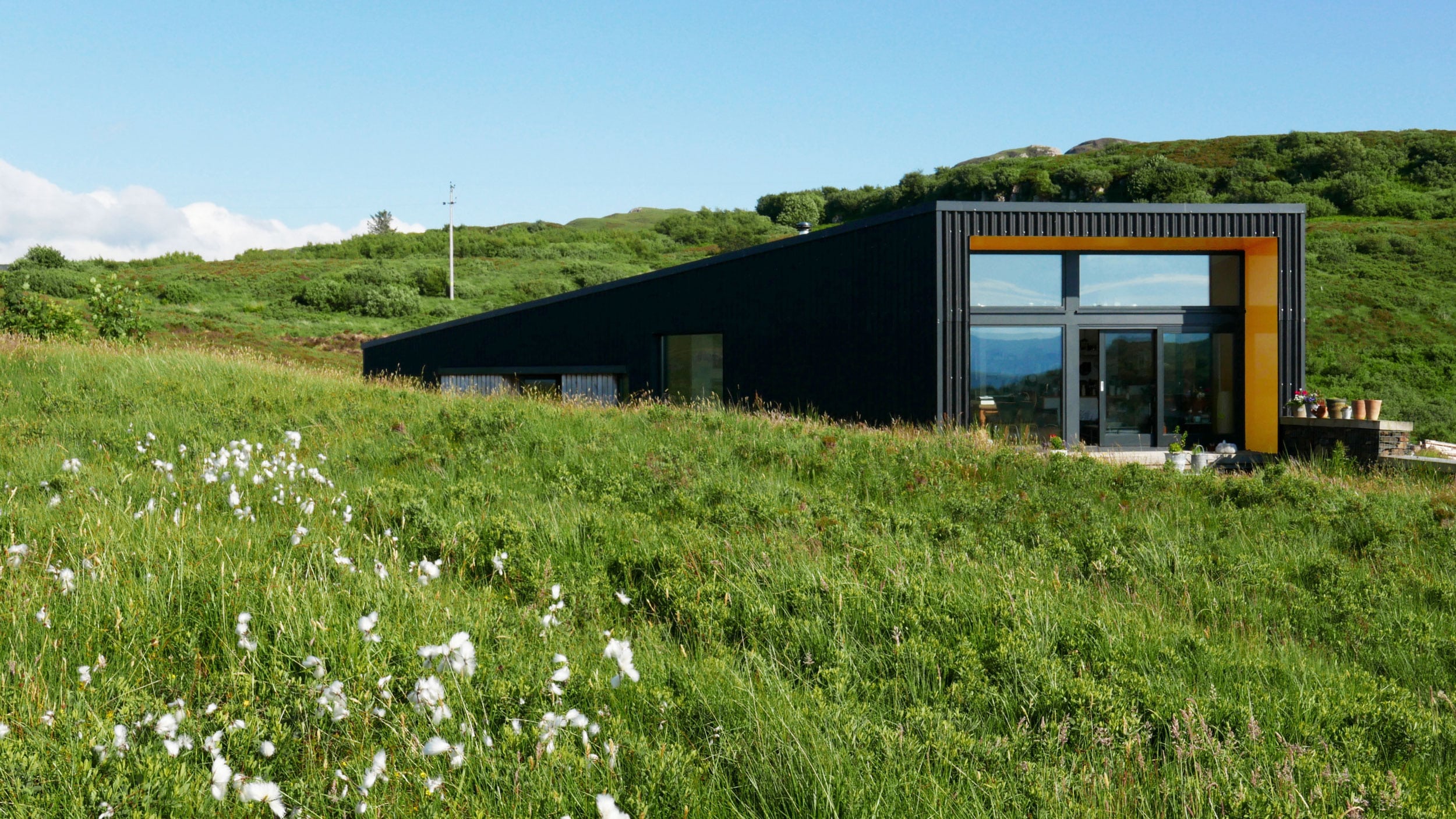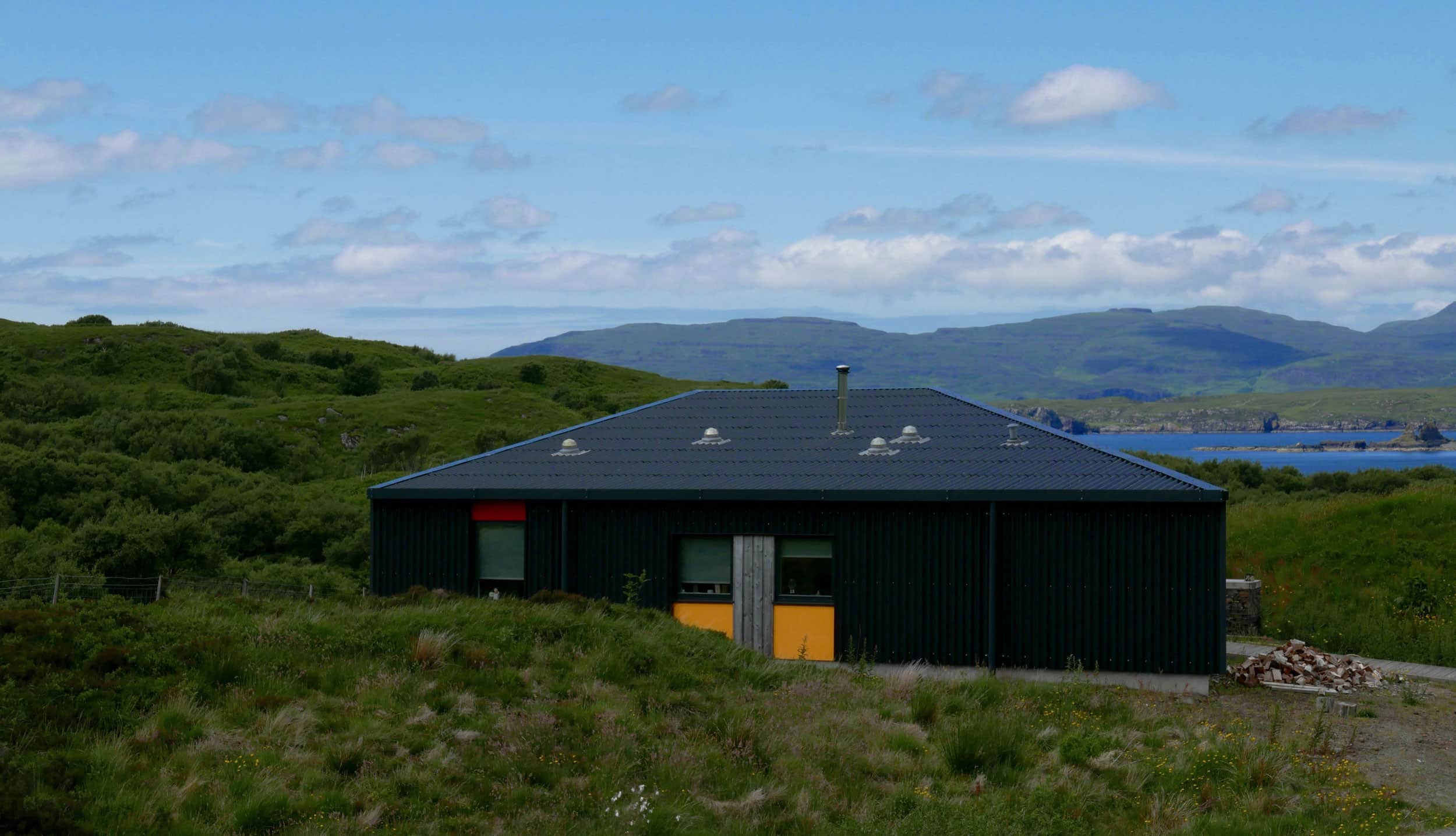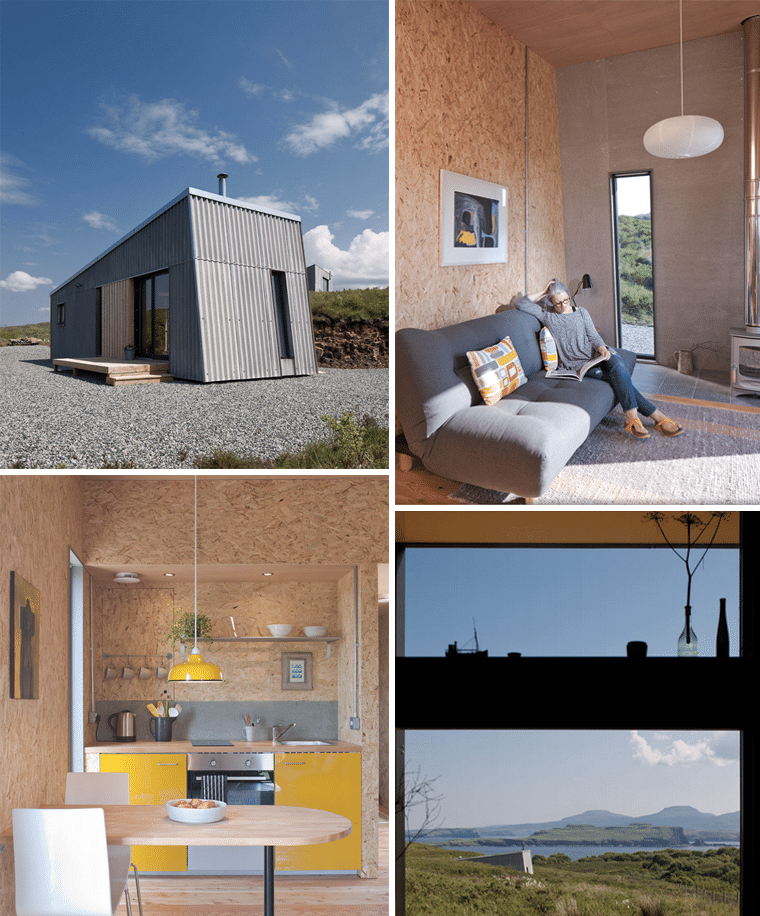Eco homes living: Would you like to live or move to a house like this? While remote and rugged settings might not be to everyone’s taste, monthly energy bills at just £70 probably will be. Welcome to the Black House on the Isle of Skye. It’s a newly built eco-house. This is an environmentally low-impact home built using technology that reduces its carbon footprint. Lowers energy needs, means cheaper bills!
This particular eco-journey for Nick Middleton and Kate Prentice, started after the pair inherited some money. Originally from Leamington Spa, they decided to change the pace of their hectic life. This, after reading an article about building a low budget eco-house. The couple and their two children moved a mere 550 miles to Skye to embark on their own project. After buying a plot of land on the edge of a small township on the windswept west coast of the island. Nick and Kate got to work employing the services of the architecture firm Rural Design
First they built The Hen House, and then about two years later decided to construct The Black House. A three bedroomed family home where they now live. And by helping labour on the site and using cheap materials, they managed to keep their budgets low. the final bill came in at around £118,000.


They made sure the house was fully insulated and airtight. They also installed a wood burning stove to heat their new home and a hot water tank. Solar panels give the hot tank a boost when required. Another eco-feature are the compost toilets, which cuts down on water use. Within 18 months of passing through the human body, the waste is ready to use as compost to help the vegetables grow. Kate is an artist who works from home. She said their £70 monthly bill was divided into paying for electricity for the cooker and lighting the property as well as wood for the log burner. Nick, 56, divides his time between Skye and working as a course director at the University of Coventry.
Speaking about the move to Skye, Kate said: “It was a slight struggle at the beginning adjusting to such a dramatic change. I missed art galleries and the shops,” but she added: “We’ve never looked back.”
The pair now rent out the Hen House. They also rent out a studio they have recently built for holiday lets.

Nick and Kate are by no means alone in their quest to live a ‘greener’ life. Amid the oil crisis and soaring energy prices, eco-homes are becoming increasingly popular. Research by SmartNewHomes.com shows a surge of interest in energy saving, with 82 percent of buyers now actively seeking it. This is a complete reversal of the findings in 2005. Then, around 80 percent of buyers said they didn’t even consider energy saving when looking for a house. This interest has also fed down into the tourist market. There are now many more requests for eco-homes to rent for a short break.

Hester Ross, from the misty Isle of Islay, was very conscious of the increasing demand when she opened up two stone-clad ‘eco-luxury’ lodges for tourists to stay in. The house is set on one of the highest hillsides on the rugged Oa Peninsula on Islay. The ‘eco’ features include a turf roof, which insulates the building. Sheep’s wool has been used acting as an insulating layer in the walls. The house is heated by a device called an air source heat pump. This takes heat from the air and boost it inside to a higher temperature using a heat pump. This provides underfloor heating as well as warming water for the house and hot tub outside. Hester said the cottages in Coillabus were tapping into the ‘eco-luxury’ market.
“There is a growing demand for people to rent something that is more environmentally friendly,” she said. “All our furniture is up-cycled. The towels and bedding are made from organic cotton and there are sheep wool duvets on the beds.” She added: “One of the big things was wanting them to look like part of the landscape. I think we’ve achieved that.”
This growing demand for eco-properties has been seen by leading estate agents, Savills. Anna Gardiner of Savills Country House team said: “We have had great success selling both purpose built eco-homes. These may have been built from local, sustainable materials and include features like heat exchange units.”
However, she added that buyers were also looking for ways to make older properties more eco-friendly. She added: “Equally there is good demand for period houses that have been sensitively enhanced to include features like solar panels and efficient insulation.
“Committed eco-buyers are happy to wait for the perfect property to come along, and are less location specific. Often this means buying a plot in a beautiful spot and commissioning an architect to build their dream eco-home from scratch.”
And this eco-rise is something that Removal Services Scotland (RSS) has also seen.
Graham Byers, sales manager at RSS said: “We have noticed that as fuel bills continue to rise, awareness of trying to live in a more eco-friendly way increases. We have seen that reflected in the types of houses people are moving to. Newly built eco-homes to older houses that have been enhanced to include features like solar panels, biomass boilers as well as better insulation and glazing.”
To rent the Hen House or studio on the Isle of Skye go to:
15fiscavaig.co.uk or fiskavaigstudio.co.uk
To rent an ‘eco-luxury’ lodge on the Isle of Islay go to: www.coillabus.co
Last year government scrapped plans to make all new UK homes carbon neutral. The zero carbon homes policy was first announced in 2006 by the then-chancellor Gordon Brown. He said Britain was the first country to make such a commitment. It would have ensured that all new dwellings from 2016 would generate as much energy on-site. Whether through renewable sources, such as wind or solar power – as they would use in heating, hot water, lighting and ventilation.
Eco Homes legislation
This was to be supported by tighter energy efficiency standards that would come into force in 2016. The scheme which would allow house builders to deliver equivalent carbon savings off-site. However, both regulations were axed by the government in July last year, in a move Julie Hirigoyen, chief executive of the UK Green Building Council, said was “the death knell” for the zero carbon homes policy.
Keen on saving some money on your energy bill, and helping the planet at the same time? Learn some of the best ways to reduce your energy consumption from our friends at Friends of the Earth Scotland.
Top 10 energy saving tips from Friends of the Earth Scotland
- Insulate lofts – you can lose a quarter of your heat through an uninsulated roof.
- Double-glaze windows.
- Block up your chimney.
- Draught-proof your letter box.
- Replace traditional light bulbs (called incandescent) with LED ones.
- Fix dripping taps – think how much water it wastes in a year.
- Don’t run the tap when you are brushing your teeth.
- If you don’t have a dual flush on your toilet then put a weighted plastic drinks bottle in the cistern. This will cut down on the amount of water used in every flush.
- Grow herbs and vegetables in the garden rather than just flowers.
- Sign up with an energy company that uses 100 percent renewables.









